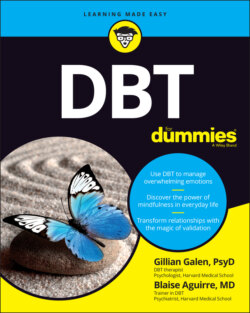Читать книгу DBT For Dummies - Gillian Galen - Страница 85
SUN
ОглавлениеThe acronym SUN stands for Sensations, Urges, and Name the emotion:
Sensations: All emotions have associated sensations. Your body holds important clues about how and what you’re feeling. Briefly scan your body, starting at your head and moving down to your toes. Do you feel a tightness or clenching of your jaw? Warmth in your cheeks? Throbbing in your head? Tears in your eyes? Tightness in your chest? Butterflies or a sinking feeling in your stomach? Tightness or clenching of your hands?
Urges: All emotions have associated action urges. This makes sense, as one of the functions of emotions is to motivate action. For example, when you feel fear, you may have the urge to run, fight, or freeze. When you’re sad, you may feel the urge to curl up, cry, or isolate. When you feel shame, you may want to hide. When you’re angry, you may have the urge to yell or hit or throw something; other people may cry when they are angry. We don’t all have the same action urges, but they tend to be similar.
Name the emotion: Once you have identified your body sensation and your urges, you typically have enough information to name the emotion. We know that once you can name the emotion, it begins to decrease in intensity. That often occurs because it gives you some space between your own experience and what you’re feeling. This also helps you find the primary emotions, which may have been hidden beneath a secondary emotion. (We discuss primary and secondary emotions earlier in this chapter.)
